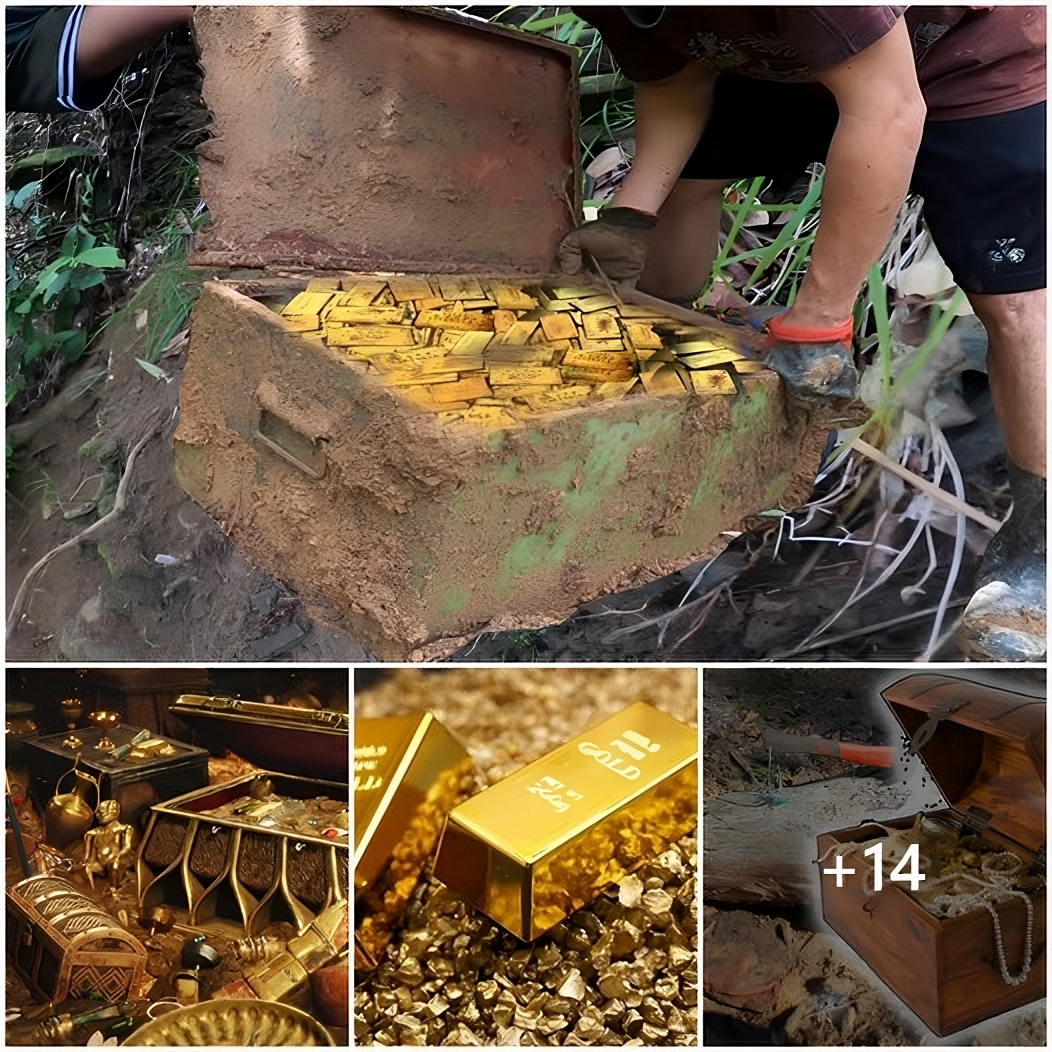
Archaeology may be the discovery of and research of things that happened long ago, but it is an ever-changing field. Every year new discoveries are made that either teach us something new or show us what we thought we knew was wrong. 2022 was no different, it was a year full of exciting discoveries. From a close-up inside look at an Egyptian pharaoh’s coffin to a 9,000-year-old shrine found in Jordan, 2022 was a great year to be a history fan. As we prepare to move into next year let’s take a look at 10 of the most exciting archaeological discoveries of 2022.
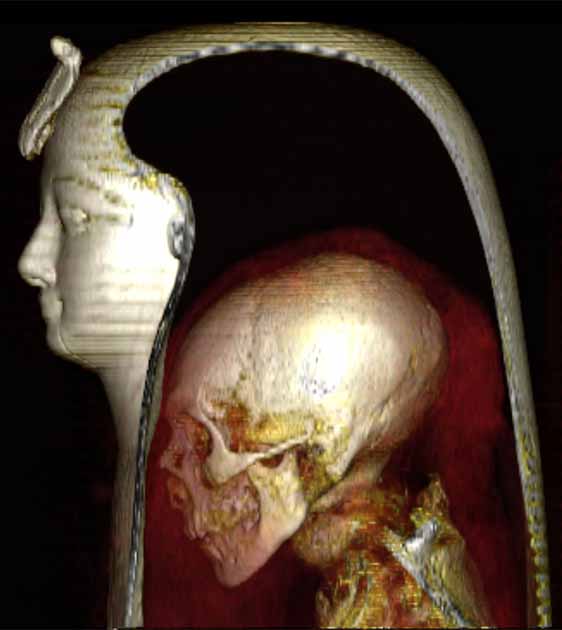
Amenhotep I’s outer sarcophagus and his head and body after scanning inside. ( S. Saleem and Z. Hawass / Frontiers in Medicine )
1. A Look Inside Amenhotep’s Coffin
Historically we haven’t always been great at looking after or showing respect to important archaeological discoveries. A disturbing example of this is Egyptian mummies. Rather than being treated with the respect and reverence, a body deserves, all too often mummies have been treated as novelties.
The Victorians went as far as throwing exclusive mummy unwrapping parties. Sadly this has left modern historians and archaeologists with precious few royal mummies that have not been unwrapped and damaged.
Thankfully the mummy of Amenhotep I, which was first discovered in 1881, was never unwrapped because it was believed to be too beautiful to destroy. For over a hundred years, Egyptologists have been desperate to take a look at the face of Amenhotep. This year, thanks to the use of noninvasive CT scans, they finally got to see inside Amenhotep’s mummy.
The team based at the University of Cairo was struck by how much the mummy resembled his father, Ahmose. The CT scans used allowed the team to see what Amenhotep had looked like when alive, rather than just a desiccated piece of meat.
Amenhotep was originally found in a cache of mummies that had been collected, rewrapped, and reinterred in the 21st Dynasty after tomb robbers had damaged them. The scans show just how badly Amenhotep had been damaged and how much care the 21st Dynasty priests had taken in repairing his mummy.
Also found this year were two sphinx statues of Amenhotep III in Western Luxor.
His neck had been broken when looters had torn off a necklace and the priests carefully reattached his head with a resin-treated linen band. They also repaired his broken left arm, covered a hole in his stomach, and added new gold amulets.
For a long time, it had been believed that these priests uncovered and rewrapped old royal mummies so as to be able to rob them. The scans show the opposite is true. The priests not only treated these royal mummies with the utmost respect but even added new valuables to the old mummies in a show of veneration.
Antarctic explorer Earnest Shackleton’s long lost Endurance shipwreck, which sank in 1915, has finally been found at a depth of 10,000 feet or 3050 meters off the coast of the icy continent. Source: Falklands Maritime Heritage Trust / National Geographic / Endurance22
2. Endurance at the Bottom of the Sea
Few archaeological discoveries grab headlines like the discovery of a long-lost shipwreck. 2022 was the year that the long-lost ship of the legendary explorer Ernest Shackleton, the Endurance, was discovered.
The ship first sank off the coast of Antarctica in 1915. Shackleton had hoped to make the first land crossing of Antarctica but his plans were scuppered when his ship became stuck in a dense pack of ice. He and his crew of 28 were left with no choice but to abandon their ship. For the next several months they camped on ice floes which carried them northward until they finally reached the uninhabited Elephant Island.
From there Shackleton and some of his men traveled another 800 miles until they reached the island of South Georgia where they finally found help and managed to rescue the rest of their crew.
Of course, by this time the Endurance, a 144-foot-long, three-masted ship, had run out of endurance and sunk. Over the last century there have been numerous attempts to find it, but the same ice that sank it doomed any attempts. However this year thanks to historically low ice levels, the members of Endurance 22 (a team of devoted historians and underwater explorers) finally managed to find it.
Using a remotely operated submarine the Endurance was found 10,000 feet underwater, around 4.6 miles south of its last estimated position. It turns out the ship is in remarkably good shape, thanks to the frigid sea’s lack of wood-eating parasites. Sadly, it has been deemed unsalvageable as the ship is completely flooded with water. Still, the team’s work is a fascinating look into a long thought lost piece of history.
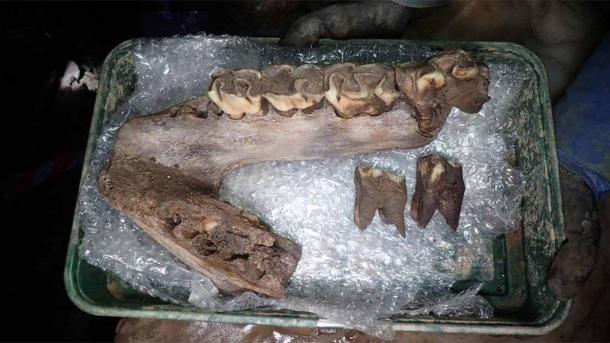
Ice Age animal bones, including this woolly rhinoceros jaw, have been discovered in Devon. Source: AC Archaeology
3. Mammoths in Devon, England
So this next discovery is technically more paleontology than archaeology, but it’s still one of the most interesting discoveries of the year. When you think of British wildlife the biggest thing that comes to mind is perhaps the red deer. And the most dangerous thing that comes to mind might be a particularly grumpy badger.
It turns out that not that long ago British wildlife was a bit more exotic. During the construction of new houses in Sherford, near Plymouth, some rather peculiar bones were found in a previously undiscovered cave. A team of archaeologists, led by Rob Bourn, was brought in.
They discovered the bones of mammoths, woolly rhinoceros, and hyenas in a cave that had been uncovered during construction. The bones date back to around 60,000 to 30,000 years ago during the middle of the last ice age. While ice age fossils aren’t a particularly rare discovery in the United Kingdom, finding so many in one cave is a much rarer occurrence. A petition is now being held to try and protect the site to make sure the cave isn’t sealed and houses built on top of it.
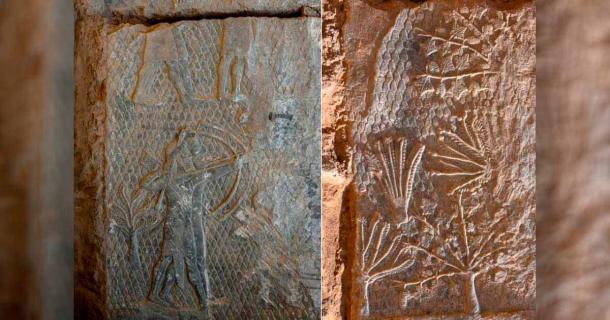
These ancient Iraq carvings dating to the Assyrian Empire were unearthed near the Mashki Gate in Mosul, escaping destruction by IS in 2016. Source: Iraqi Ministry of Culture
4. Ancient Artworks Rescued From ISIS
Tragically over the last few years, the terrorist group ISIS has made a concerted effort to destroy as many archaeological artifacts as they can across the Middle East. Museums have been raided and monuments that survived millennia have been looted and destroyed. While the group has claimed they seek to destroy anything they consider to be harem or immoral, the truth is they have been selling much of what they looted on the black market to fund their war.
Two of the ancient monuments destroyed by ISIS were the Mashki and Adad gates at the ancient site of Nineveh in Iraq. The site dates back over 4000 years and at its height was the capital of the Neo-Assyrian Empire. The gates were iconic and their destruction was a tragedy.
Happily, there is a sliver of a silver lining. Archaeologists digging through the ruins of one of the gates found a sealed door that hadn’t been opened for over two and a half thousand years. Inside they found stunning artworks that date back to roughly 700 BC. It is believed the seven carved stone panels depict the Assyrian king of the time’s various military campaigns.
5. The Discovery of Queen Neith’s Tomb in Egypt
Back to Egypt for another Royal discovery. Ancient Egypt may be one of the most widely studied periods in human history but what many people don’t realize is that we still have huge gaps in our knowledge when it comes to Ancient Egypt. Ancient Egyptian civilization lasted for over 3,000 years and there are huge chunks of time where we have blanks.
In November of 2022, the tomb of Queen Neith was found at the ancient necropolis of Saqqara. A previously unearthed pyramid was discovered which held 300 coffins and 100 mummies as well as a series of interconnected tunnels. What made the discovery so exciting was archaeologists had no idea who Neith was when she was unearthed.
They soon discovered her name was Neith and that she was completely missing from the historical record. As Zahi Hawass, an Egyptologist working at the site put it, “It is amazing to literally rewrite what we know of history, adding a new queen to our records.”
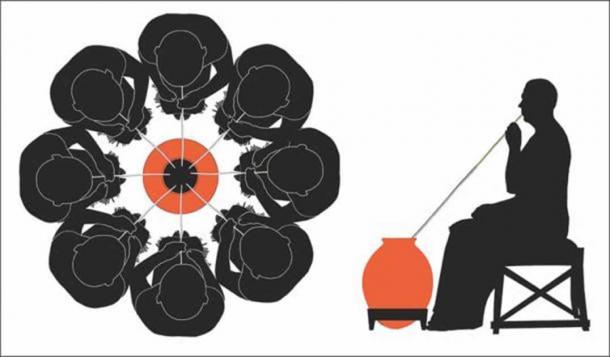
Reconstructed use of the oldest drinking straws, found in the Maikop kurgan. (V. Trifonov / Antiquity)
6. The World’s Oldest Straws?
Not all exciting archaeological discoveries have to be earth-shattering or rewrite the history books like the discovery of Neith did. Sometimes they just give us an interesting glimpse into the lives of our ancestors.
Back in 1897 archaeologists found hundreds of artifacts in a richly furnished burial ground in Russia known as Maikop kurgan. The site dates back to 3500 BC and amongst the artifacts found were ceramic vessels, metal cups, weapons, jewelry, semi-precious stones, and gold.
The strangest things found were hollow eight gold and silver tubes that measured 3.7 feet long. Historians were stumped and decided they were either scepters or poles used to hold up canopies. In 2022 their true purpose was discovered.
Russian archaeologist Viktor Trifonov had long suspected the tubes had had a different use. He believed they were communal drinking straws like the ones depicted in some Mesopotamian artwork. To find out if he was right he analyzed residue that was left on the tubes’ silver tips.
He discovered traces of barley starch granules, fossilized plant tissue, and pollen grain from a lime tree. These traces all suggest that the tubes were used to drink barley beer. While Trifonov’s discovery may not have made it into the papers it is an important reminder of just how wrong archaeologists sometimes get things. These 8 tubes went from being glorified tent poles to evidence of a Mesopotamian drinking tradition all thanks to the hard work of one determined archaeologist.
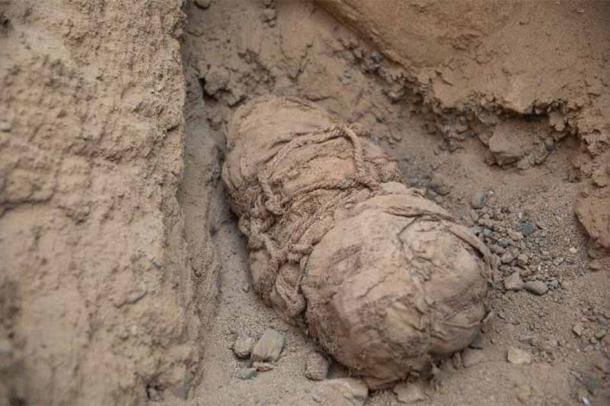
One of the six sacrificed children found in the tomb of an important man in the ancient Andean city of Cajamarquilla. The tiny skeletons were wrapped tightly in cloth. Source: PHYS
7. Sacrificed Mummies in Peru
Not all archaeological discoveries are as pleasant as discovering ancient drinking straws. In 2022 researchers working in a digital 15 miles (24km) east of Peru’s capital, Lima, made a rather macabre discovery.
They were excavating the grave of a high-ranking pre-Inca noble or wealthy merchant dating back 1000-1200 years ago when they found the mummified remains of eight children all swathed in cloth. The team’s leader, Pieter Van Dalen, believes the children were likely close relatives of the grave’s owner.
It is believed that they were sacrificed so that they could accompany him to the underworld. This was a common part of funeral rituals for elite individuals in pre-Inca cultures as Andine societies saw death as a beginning rather than a passing.
The discovery just outside of Lima backs up previous archaeological discoveries in the area regarding the pre-Inca sacrifice of children. In 2018 a team of international archaeologists uncovered the remains of 140 young people at a site near Trujillo dating back 550 years.
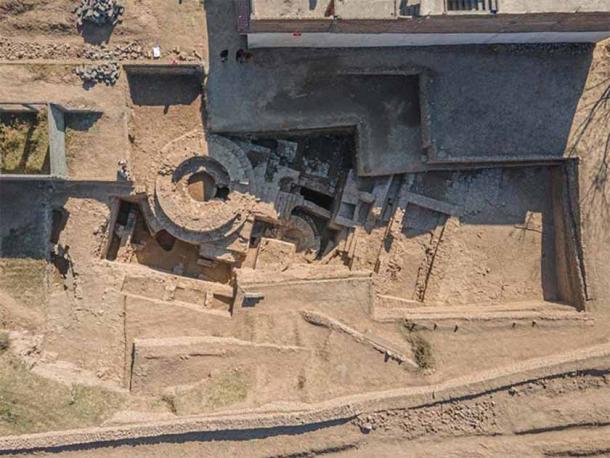
An aerial view of the newly discovered BC Buddhist temple found in the Barikok ruins of Pakistan. Source: Ca’ Foscari University
8. The Oldest Buddhist Temple
Buddhism is believed to have been founded in Northern India at some point between the late sixth and early fourth centuries BC. In 2022 in the Northwestern part of northwest Pakistan known as Greater Gandhara a Buddhist temple dating back to the second century BC was found.
The temple, found in the city of Barikot, was found by Luca Maria Olivieri and his team from the ISMEO (International Association of Mediterranean and Oriental Studies). It is the oldest known Buddhist temple in the region and one of the oldest in the world.
Before the unearthing of the temple, no evidence of a Buddhist presence in Barikot had been found before the end of the first century AD. Olivieri and his team didn’t expect to find a temple in the area that dated back to such an early era.
Its discovery indicates that when the temple was built Barikot was a center of Buddhist teaching and a sacred pilgrimage site as early as the second century BC, much earlier than historians had thought. Archaeologists had already known that Barikot had been of strategic importance, being at the nexus of various major expansions such as the Persian Achaemenid Empire and Alexander the Great but this discovery shows Barikot “Barikot had its importance for Buddhist communities.”
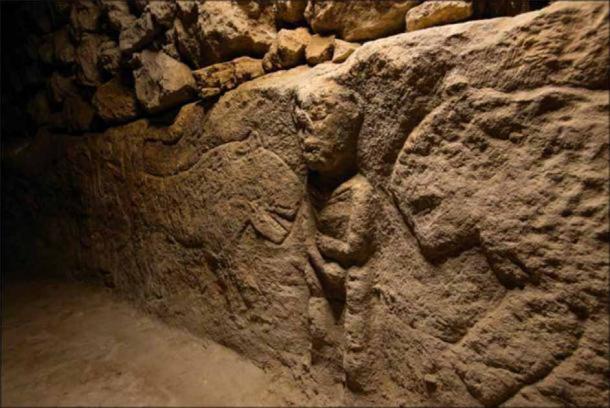
The male figure situated between two leopards (K. Akdemir/ Antiquity Publications Ltd ).
9. The Oldest Narrative Ever Discovered?
We all love a good story. Here is one that dates back over 11,000 years. In 2022 two benches were found at excavations in Sayburc, a village in South Eastern Turkey. While the discovery of two benches may not be particularly exciting, what was carved into them is.
The benches feature two carved scenes that depict people interacting with animals. One shows a man flanked by leopards and holding his penis while the other shows a man squatting and shaking a rattle at a bull.
The fact that these two benches are neolithic, dating back 11,000 years, makes them the first known examples of a holistic scene. In short, they may well be the oldest narrative ever discovered. Researchers believe the scenes might depict either historical characters or mythical figures that were an important part of this particular neolithic group’s beliefs and traditions.
As the dig and research into the site continues it is hoped more important insights into the traditions of these neolithic people will be discovered.
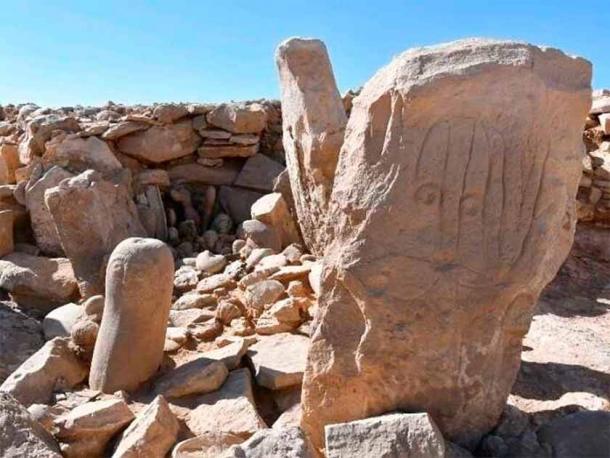
One of the ancient faces carved in stone at a remarkably well-preserved Neolithic shrine found at a prehistoric gazelle hunting camp in Jordan’s eastern desert. Source: Jordan Tourism Ministry
10. A Very Ancient Hunting Shrine
2022 saw another important Neolithic discovery, this one dating back around 9000 years and originating in the deserts of Southeastern Jordan. Mohammad Tarawneh and his team of archaeologists from Al-Hussein Bin Talal University and Wael Abu-Azizeh of the French Institute found a stone shrine believed to be the earliest ritual structure ever unearthed.
The shrine was found at a Neolithic campsite near a network of “desert kites”. These are pairs of rock walls that crisscross the desert. The shrine is a scale model of one of the desert kites. Along with the shrine a large stone altar was also unearthed. It is believed the altar was used for the butchering of gazelle as a part of rituals held at the shrine. The team believes rituals were held to invoke the aid of supernatural forces in future hunts.
Much like the discovery of the benches in Turkey researchers hope further research would give us a better insight into the beliefs and practices of these Neolithic hunters.
Conclusion
2022 was a year full of exciting archaeological discoveries and picking only 10 was a tough task. All over the world thousands of teams of archaeologists are hard at work, unearthing discoveries that continue to shape our understanding of human history.
We must recognize and support their work. For hundreds of years, many of these important historical sites didn’t receive the respect or protection they deserved. Thankfully this is changing and the 21st century is a great time to be interested in ancient history. Who knows what discoveries 2023 will bring?


